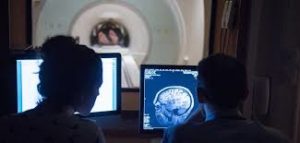In human history, only a few pandemics have been of a volume as overwhelming as the current COVID-19 one. It is a disease caused by the deadly coronavirus. Research has established that the communication potential of this virus can hardly be matched with any other, which makes the virus unique, lethal, and a health-wrecker. It enters the human body through droplets, and thus wearing masks have become a must to control the spread of the disease. However, no matter the precautions, the virus has taken the world by storm, and millions have died, falling prey to it.
The researchers are putting in relentless effort to surface the facts and perils related to this disease to make the mass aware. Continuous endeavors in this field have unveiled the fact that apart from impacting the lungs and the heart in adverse ways, the virus also substantially impacts the neurological system of the brain. Being a variety of SARS virus, Coronavirus is sure to impact the respiratory tract and the lungs. But, its fatal and long-lasting impact on the brain is something that needs much research. Keeping the same in mind, the French Society of Neuroradiology examined 37 patients to reach a conclusion about the pattern of the impact the virus is casting on the human brain.

Who are at risk the most?
Needless to say that people with weaker immunity always stays at a greater risk no matter what disease it is. When it comes to a disease as fatal and life-claiming as COVID-19, immunity surely plays a critical role. Here comes the importance of age. Experts suggest that people belonging to the age group of 60 or more are more vulnerable to this disease as their immune systems are less capable of fighting and winning the virus over a short time. Consequently, the body of the older people succumbs to this virus rapidly, and if they somehow make a recovery, their heart and brain get impacted severely.
French Society of Neuroradiology published their reports of neurological imaging from 16 centers where the examination was conducted on June 16. It confirmed the brain abnormalities consequent upon the Novel Corona Virus.
The report also revealed that older people had tendencies of altered consciousness, pathological weakness, a sense of agitation, and confusion. However, diffusion sequences with variable enhancement and non-confluent multifocal white matter hyperintense lesions on FLAIR were seen in fewer people. Extensive and isolated white matter microhemorrhages were the third variety of neurological patterns found in COVID-19 patients. Therefore, all the coronavirus patients stand the risk of abysmal neurological patterns, but the risks double when the patient’s age is more than 60.
Are young people completely safe?
When the reason for the disease is a virus as unpredictable and potent as Coronavirus, no one can be marked safe completely though, young people surely stand a fair chance to walk out of the disease with minimum impacts registered. The extent of contamination can be another aspect that needs attention here. If the contamination is fatal, even the younger people stand a chance to fall sick severely. Consequently, their neurological system is also likely to be impacted adversely by the virus regardless of their age. Hence, age cannot be an assurance against COVID-19, but higher immunity can surely put up a better fight with the virus.
How the virus impacts the CNS?
Even though Novel Coronavirus has been there for over a year now, not everything about nature and the potential of the virus is yet known. One such aspect that is still a mystery to us is its potential to impact the central nervous system. Scientists have figured out with the help of neurological imaging or brain MRI that Coronavirus has a sure impact on the brain, but the extent of the impact and the long-term effects of the same remains a mystery. A recent article in the Journal of Alzheimer’s Disease suggested that every COVID patient should go through a baseline MRI to understand the brain system of the patient immediately after the disease so that future developments can be tracked without any ambiguity.
The one finding that gave hope to the medical sector was that the traces of the virus’s RNA was found in the cerebrospinal fluid of only one patient so far, and the impact of the same could not be tracked distinctively. Hence, brain imaging could be of much help in the times to come to understand and interpret the effects of the virus on the brain health of the patients.
For those who are looking for a reasonable and advanced solution in the field of brain imaging, sepStream® can be a one-stop solution. No matter what your radiology and imaging-related requirements are, at Sepstream, you will find a plethora of solutions for various needs.